You love teaching but you are probably wondering how to tutor online and start making money and impact in the world with your unique knowledge and set of skills. We are confident that you will find answers to most, if not, all of your questions reading our ultimate guide to tutoring online in 2021. Are you ready to start tutoring your first student today? If not, you will definitely feel ready by the end of this article.
Tutoring online is a great way to make money on the side or full time. It also allows you to share your knowledge in a creative way so as to help students with their learning & problem-solving skills. There are many ways you can tutor online or in-person. In this article, we will look at everything from finding students & making money to the best online tutoring platforms and equipment.
Table of Contents
1. Employment Status
Before you begin tutoring you may want to think about whether you want to work for yourself or for a company. For absolute starters, we recommend working for another company so you can get a student immediately and start gaining valuable experience. Here are some of the benefits of working for a company:
- You do not need to spend time on marketing and finding students
- You get a higher salary as your performance improves over time
- You are given all the resources (textbooks, worksheets, etc.)
- You can get help if things go wrong
If you have been tutoring for a while and you wish to be self-employed or start your own business, you can certainly do so by using various marketing platforms such as social media, kijiji/craigslist, google ads etc. We will talk about how to utilize each one of these platforms later in the article. Here are some of the benefits of being on your own:
- You get to set your own rates for different subjects
- You get to set your own schedule
- You are more independent which means more freedom and increased responsibility
- You can potentially make more money
Once you decided, let’s move on to to step 2.
2. What can you teach online?
If you are reading this article right now, you probably know what you are good at and what you can teach. If you are an undergraduate student at top universities like UofT, UOttawa, McMaster’s, UBC you may already have the skills to teach elementary or high school subjects. This is not to say that other university students cannot be good tutors – in fact, some of the best tutors at TutorOne, are from less popular schools.
It is quite likely that you may have forgotten most of what you learned, but don’t worry, upon reviewing some of the materials you will feel that confidence coming back. Check out our resources page to get all the textbooks you need to start preparing.
Once you have a clear idea of what you can teach, move on to step 3.
3. How to Become a Tutor: Basic Requirements
To become a tutor, most tutoring agencies will ask you for the following:
- Bachelor’s degree (pending or completed)
- Full proficiency of the subject matter
- Previous experience (optional)
- Availability after school on weekdays and during the weekend
- Access to a car (if you consider in-person tutoring)
TutorOne places the most importance on the applicant’s subject expertise, teaching ability, confidence, and communication skills.
Why? One can have the best grades on his/her university transcript which is definitely a big plus because it clearly indicates that the applicant knows the subject very well. However, teaching a subject requires a different set of skills. Remember, teachers are not born teachers. They become good teachers after many hours of practicing, receiving feedback, and improving.
4. How Much do Tutors Make?
Tutor Salary is dependent on the difficulty of the subject you teach. It also varies with the demand and supply for that particular subject. In general, you get paid more for tutoring university subjects and standardized tests such as MCAT, LSAT, GMAT, GRE, etc. simply because there is only a handful of good tutors for these fields. On the flip side, there are a lot of tutors who can teach elementary or high school subjects. These tutors earn less simply because of the high market supply. In order to make more money, you can either tutor a lot of students in the same grade level, or you can teach something that is in high demand with less supply and hence charge more money. In general, expect to earn anywhere from $20/hour to $40/hour if you work for a company and anywhere from $25/hour to $100/hour if you work for yourself.
5. Resume and Cover Letter
Well written resume and cover letter are still very important attributes of a successful applicant.
A good resume should include information on the following:
- Objective
- Education
- Work Experience
- Interests and Skills
- Awards and Scholarships
- Volunteer Work
- References
You can download a sample resume using this link and fill it up with your personal information.
Cover Letter Sample
I am applying to tutor High-School students in [subject names]. I have attached my resume below with my background in Human Biology and Psychology from [institution name]
I have founded, led, and taught students as president of a student society at my university. Post-graduating, I continued to take on a leadership role in the sciences, where I have taught and supervised international research students while in my role. As a student, and at work, I’ve found that teaching others concepts is a rewarding way to make a direct impact on others and share in the pride of my own work/knowledge. I’m excited to apply!
Please let me know if you have any questions I can answer – I am happy to speak via email or phone.
Thank You,
Name + Last Name
6. How to Find Students Online
The old model of advertising with flyers and other physical means is no longer relevant not because of COVID, but also because of the time and effort you have to put in to get good results (think: ROI). Therefore, we will skip discussing these. In order to find customers, think about where people look for tutors on a regular basis. You may know better methods of finding customers and you should definitely go with the one that is a reliable source and one that brings in the most students.
a. Referrals
It goes without saying that referrals have always been the best way to get more business. People trust their friends, relatives, co-workers more than they trust the internet. If you are just starting and have no way of getting referrals (because nobody knows you), then it is best to try other methods, get your first customer, give them good results and ask them to recommend you to their friends. Just don’t forget to give them a good incentive (Example: 10% off your hourly rate for every new business). If they really like you, however, they will most likely refer you without any incentives.
b. Classified ads
Kijiji and Craigslist are still good ways to get more people to use your services. Simply go to their website, create an account, and start posting an ad. Below will demonstrate how to do this on Kijiji. If you don’t know how to post a good, catchy ad, simply look at the ones other tutors have been posting and try to post something similar. Note that your ad will be almost inactive after a few days so you will want to post every 3-4 days. Otherwise, you can also pay Kijiji to keep your posting on top.
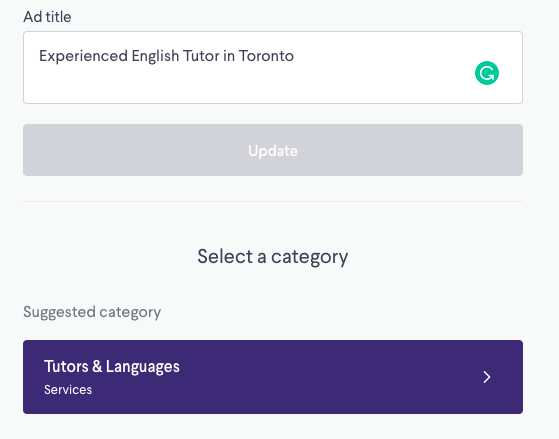
Ad Description:
- Intro of you
- Subjects you teach
- Experience
- Qualifications
- Areas of operation (skip if online)
- Interest/Hobbies and Skills
- Free Lesson Incentive
Tags
Tags or Keywords are very useful since they help Kijiji’s search engine to understand and display your ad more effectively. Some of the most popular tags follow this format: “subject-tutor-city”. An example would be math tutor Vancouver, science tutor Montreal and so on.
Media
Have good pictures of you that provide proof of your skills. Do not select a pretty, casual image of yourself that your friends have liked and commented on Instagram. Good pictures would include you with a textbook, you with a student that you already have, and… you get the idea.
c. Tutor Databases
Finding clients on these databases are more challenging at the beginning simply because you do not have reviews and an established past record of success. These websites are good long term investments, however. We will mention some of the most popular ones for you to explore. As with anything, look at the tutor profiles that have been performing really well and consider using some of their strategies.
d. Facebook Groups
There are plenty of social media groups where customers are looking for tutors. The first, Ultimate Support Group for Online tutors is where you can ask questions and get help from other experienced tutors. The third one is where you can actually find jobs. Make sure you have a unique selling proposition (USP) to convince customers that you are the right one. You can read more about USPs here
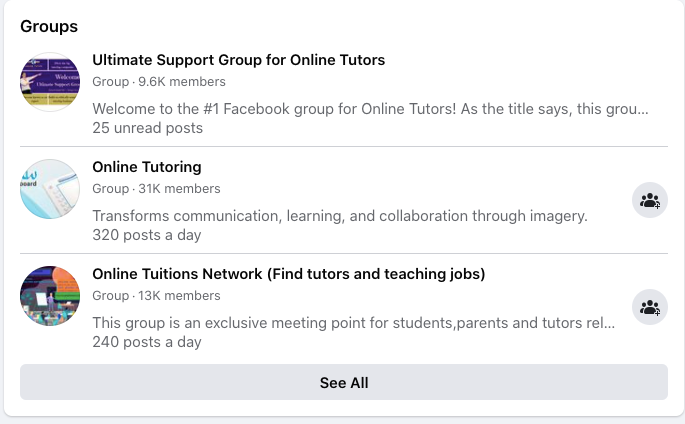
e. Other Options
Are there any other options that have worked for you? Share with us in the comments section below.
7. Online Tutoring Companies
There are many in-person and online tutoring companies and learning centers in Canada & the US. A Quick google search (online tutoring companies, tutor jobs, etc.) will reveal the majority. We recommend picking a company that treats their tutors with respect, provides help whenever needed, and offers good salaries. For example, if a company offers $19/hour for tutoring a grade 12 physics course or a harder university course, it is likely that this company prioritizes its revenue over everything else. Why? Physics 12 is a very difficult course and, the harder the course, the more challenging it is to teach, and less likely it is to find a good tutor for this course. Make sure you do your research well and receive an hourly wage that is fair to you.
Some companies post their jobs on Indeed, the largest job database in the world, and you may benefit from looking at these postings as well.
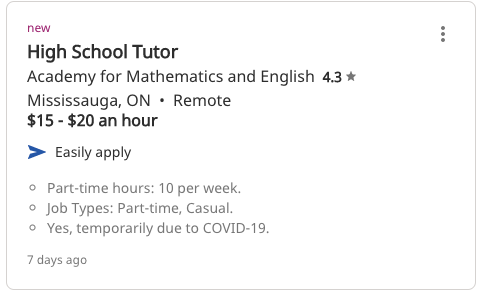
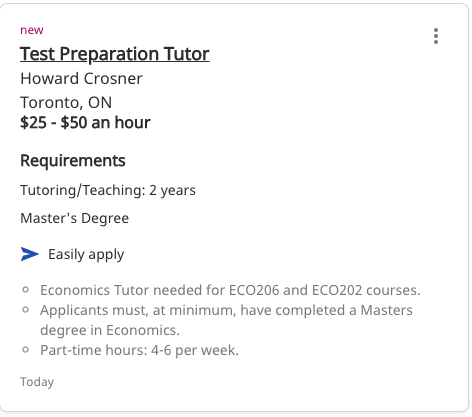
Taxes
Whether you work for a tutoring company or for yourself, it is most likely that you will be treated as an independent contractor (also known as a subcontractor) which falls under the category of self-employment. Most companies, including TutorOne, pay the full amount to their tutors and do not deduct taxes. Tutors, therefore, are responsible for filing their own taxes using the T4A slips issued by their respective corporations.
If you find a full-time job, however, then you may be given an employee status in which case, your tutoring company will deduct taxes from your payments.
8. How to Become a Good Tutor
Not that you have a job (or you are already applying for some) or a business of your own, it is important to sharpen your skills and offer quality services. Why? The better you are, the easier it will be to get more students (duh!).
Note that as a tutor, you will need to be flexible in terms of your teaching style to accommodate students of different learning styles. Over time, you will notice that some students are easier to teach, while some require more patience and more detailed instruction. If you want to get feedback on how you are doing during the lesson, do not ask your student directly, because most of the time students won’t tell you the truth (they want to be kind and polite). Instead, look at their body language, facial expressions to determine how comfortable they feel with you. On top of this, you can also frequently test them before moving on to teach the next topic. If your student has difficulty solving problems, then it is time for you to revise your strategy and reteach the concept.
1. Get to Know your Student
Your first lesson with the student are critical for establishing a positive relationship and learning more about them so you can personalize your lessons.
Set 10-15 in the first lesson to discuss the following questions:
- What subjects in school do you enjoy?
- What are your strengths and weaknesses in this class?
- What are your marks like in this subject, currently and in the past?
- How do you feel about the way this class is taught to you?
- Do you usually finish your homework on time?
- How do you usually prepare for a test?
- What do you struggle with the most when taking a test?
Asking questions can tell you more about the student’s learning styles, study habits, and test-taking skills. For example, they could have a good understanding of the material but struggle with managing their time on tests. Or they may face difficulties with taking effective notes. Take a look at any assessments they’ve received as well to identify where they’re losing marks.
Finally, prepare 1-2 questions to test them on and evaluate where they’re struggling. Assess not only the final answer, but how they approach the question as well. Pay attention to their body language!
2. Understand Their Learning Style
Take advantage of the one-on-one environment and maximize their understanding of the material by customizing your lessons according to their learning style. After all, what works for one student might not work for another.
For example, visual learners benefit from lessons accompanied by diagrams and images relating concepts. Consider doing the following:
- Format notes to emphasize points and separate topics. Our go-to formatting style is to:
- Bold and underline headings between topics
- Highlight definitions
- Use different colours to emphasize differences
- In mathematics, take advantage of online graphing calculators like DESMOS to graph an example and relate it back to the written form of the function
- Summarize concepts involving multiple steps into a flowchart. Ex. Nomenclature rules in chemistry
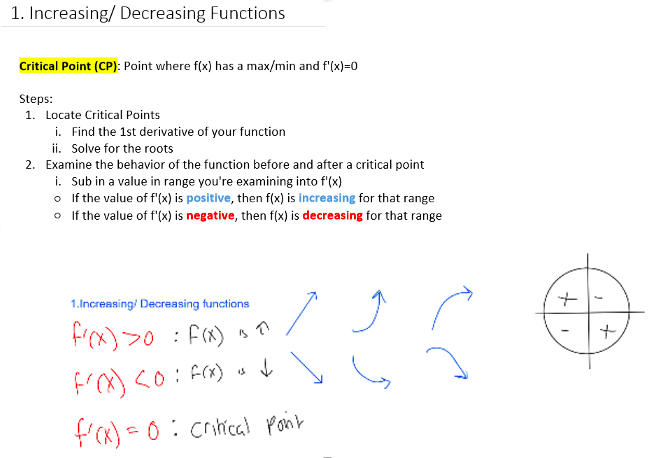
3. Set Expectations and Goals
With tutoring, you’re limited to only a fraction of the time they spend in class, so you’ll have to rely on the student putting in effort outside the lessons to ensure their understanding. In your first lesson, clearly state what you expect from, such as:
- Homework needs to be attempted before the next lesson
- Speaking up if they need a concept to be repeated
- Showing up on time and prepared for their lesson
You should also set goals for what success looks like to them. It could be scoring above 70% on a test, being able to solve a set number of questions within a time period etc.
Setting goals will give them something to focus on and work towards completing. They also allow you to measure your success with the student.
4. Plan and Structure Your Lessons
Planning your lessons gives them structure and helps you stay on topic with your student.
- Spending the first 5 minutes discussing their attempts with their homework
- Explaining what you hope to accomplish with them for the day
- Adding examples and questions within and between topics. Doing this allows you to confirm their understanding of the material at that point; if they didn’t sound confident when attempting a question, this is an indicator that you need to go back to the topic and approach it differently
- Summarizing a topic after completing it and linking concepts together
- Leaving 10-15 minutes within the lesson for questions
You may find that you need to adjust your lessons as you spend more time with them so it’s important to be flexible and open to using different methods and platforms to accommodate your student.
5. Be Patient
You might find yourself having to explain the concept several times to the student. It happens, so make sure you practice patience and avoid sounding frustrated with them as this may cause them to avoid reaching out for help when they need it. Instead, pay attention to their tone and body language and understand why they’re having trouble with focusing. Some possible causes are:
- They’re prone to distractions. Keep them engaged by asking them to explain the concept back to you and try to reduce any sources of distraction
- They’re having difficulty with the material. Break it down into smaller concepts and relate them to past material
- They need a 5-10 minute break. Consider scheduling a break every hour
If your student frequently sounds tired, it might be the actual timing of the lessons. One of my students for example would stay up late and was not very attentive in our afternoon lessons. Switching to the evening made a great improvement in his ability to stay focused during lessons.
6. Age 7-18: Engage their Parents
If the student’s parents are involved, keep them up to date on their child’s progress, especially if the student’s younger. Be sure to inform them early on if you notice any changes in the student’s performance.
Additionally, explain what your expectations are from their child. This establishes accountability when following up later on. For example, if you expect the student to complete assigned homework and you notice they’re having difficulties with recalling concepts from a previous lesson, check-in with the parents to confirm they’re spending time on this. From my personal experience, this can explain their progress as the student will struggle to retain the material otherwise.
7. Be Professional
Above all else, maintain professionalism with your student and their family to build a rapport with them and enable them to trust you.
The level of professionalism varies between grades, but here are some things to keep in mind regardless:
- Reply to emails and messages within 1-2 days
- Show up on time and prepared for your lessons
- Dress appropriately (consider smart-casual clothing)
- Keep your phone out-of-site during the lesson
- Speak in a friendly but professional manner
Overall, you want to assure your student and their parents that you’re reliable and giving them 100% of your attention.
8. Your Optimal Setup
You may be the best teacher in the world, but without good quality equipment, things fall apart quickly and students start to complain. It is important that your online setup is good to avoid any technical interruptions. Some of the most important things to include in your setup are:
- Webcam
- Decent Desktop/Laptop
- Microphone
- Drawing Tablet
- Fast Internet
- Quiet Room
- Online Tutoring Platform (Whiteboard)
For Laptop users, a detachable webcam is not important since laptops already come with an embedded camera. However, a detachable webcam is useful since you can position it at different angles. If you teach math & science, drawing tablet & stylus are extremely important since it allows you to comfortably write, draw, and annotate on the whiteboard. For a list of good quality drawing tablets, check out this blog
9. Tutoring Online with a Whiteboard
Now that you have a student, a good setup and you are in the right environment to teach, let’s talk about the best tutoring platforms for your optimal experience. The benefit of these platforms is that they offer a whiteboard along with audio + video. You can use any device (ideally laptop/desktop or large-sized tablet) to write, draw, annotate, screen-share, file upload, etc. Because everything is electronic, there is no limit for papers – you can use as many papers as you wish. At the end of the lesson, all these notes are saved and can be exported to a pdf file.
How To Tutor Online with Bramble
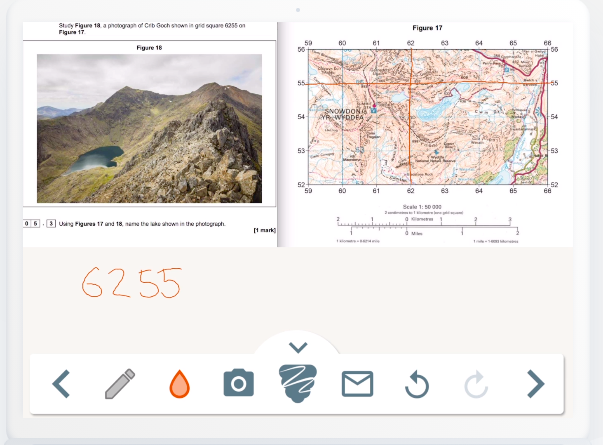
If you are an individual tutor, simply go to bramble’s website, sign up, and start enjoying their free platform. What distinguishes Bramble from other platforms is that their lessons are automatically recorded (imagine being able to watch the full lesson after it is done!), and they have a smart search functionality making it easy to go to a specific part of the lesson simply by looking up keywords (for example square root of 3).
Rooms in Bramble
A room is basically a shared notebook with live voice and video. It lets you talk, sketch, and share resources. Every session is captured for playback at a later date. This provides a fantastic revision resource for students in the form of their own personal session library.
Starting the session
Before your lesson, share the URL for your room by using the ‘copy link’ option (shown in the image above). At the time of your session, you simply both follow that link to join the same room. Make sure to click on the ‘?’ icon and check the ‘transcribe’ option to make sure Smart Search is activated on everything you and your student talk about.
Ending the session
When it is time to end the lesson, simply click on the envelope icon on the far right (as shown below). This will do 2 things: automatically send a pdf of what you worked on to both you and your student AND it will re-set the room so you may conduct another lesson with your next student or even the same student at a later date. Remember to export pdf and re-set the room so the student can have immediate access to the work they completed with you.
How to Tutor Online with BitPaper
BitPaper has a good interface and most functionalities of Bramble. In Contrast to Bramble, BitPaper does not record lessons automatically and does not have a smart search. However, they do have a screen-share option which Bramble lacks. This platform used to be free in the past, but things have recently changed. BitPaper still offers a free plan but it is only limited to 1 paper with no calls and video.
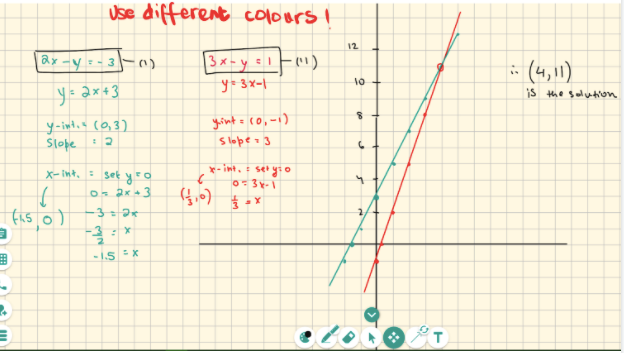
You can follow similar steps to sign up for BitPaper and start using it. Most of the instructions are somewhat alike between the two platforms.
How to Tutor Online with Zoom
Zoom is generally not recommended for tutoring, simply because it does not offer the same functionalities as the above two platforms do. If you have been using zoom for a long time and feel comfortable with it, you can definitely stick to it but keep in mind that your annotated notes can get lost at any time if you do not save them.
If you wish to know more about tutoring online with zoom, check out the following resources:
An article published by aTutor.ca gives a different, yet comprehensive view of conducting virtual sessions on Zoom.
Which Platform is the best?
It all depends on what feels better for you. As you tutor more students and subjects, you will discover that each platform is better designed for a particular way of teaching or for a specific subject.
11. Accessory Tools
It is great to be able to have your notes and lessons recorded but… you need to store them somewhere. This is where free platforms such as google drive (15GB Storage), dropbox (2GB Storage), OneDrive (5GB Storage) come into play.
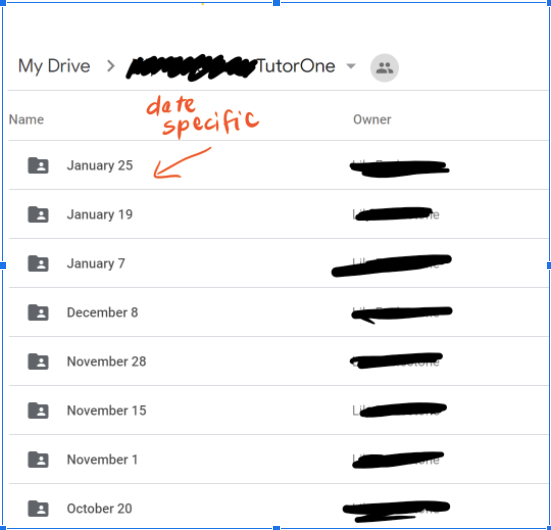
You can also have a specified folder for all of your electronic textbooks, worksheets, and other documents. Your student can access select folders of your choice to view any files (progress reports, homework check, etc.) that you upload.
Let us know in the comments what other blogs you would like to see to help you in your tutoring journey. Contact us if you wish to become a tutor at TutorOne and grow with us together.
Related Private Tutoring Services in Canada
- The Ultimate 21 Steps How To Start Your Own Tutoring…
- 51 Reasons Why Tutoring Is Important
- The Ultimate Checklist To Hiring a Private Tutor in Toronto
- Does My Child Need A Tutor In 2021 ?
- "What is a Tutor?
- 10 Effective Online Tutoring Tips For Happier Students
- Cost of Test Prep Tutoring in Canada | LSAT, MCAT, GMAT, GRE
- The Ultimate Guide To Online Tutoring
- Best Online English Tutors For Kids
- A Comprehensive Guide to Special Needs Tutoring Programs
- Lac-Supérieur QC Private SSAT Tutoring & Test Prep
- 21 Things To Remember Before Hiring A Private Tutor…
- A Top TOEFL And IELTS Study Plan for ESL Students
- Saint-Jérôme QC Private Tutoring Jobs - Become A Tutor Today
- 101 Challenging SAT Math Questions You Need To Master
- 7 FREE SAT Practice Tests And Tools That Will Help…
- Thorndale ON In-Home & Online French Tutoring
- Prince George BC Private Tutoring Jobs - Become A…
- Campbell River BC Private Tutoring Jobs - Become A…
- Fraser Valley E BC Private SAT Tutoring & Test Prep
- Orillia ON Private SAT Tutoring & Test Prep
- Agassiz BC Private Tutoring Jobs - Become A Tutor Today
- Boucherville QC Private Tutoring Jobs - Become A Tutor Today
- London ON Private SSAT Tutoring & Test Prep
- Breaking Down The SAT: How SAT Tutoring Empowers…
- Cowichan Valley BC Private SAT Tutoring & Test Prep
- Sunderland ON Private SAT Tutoring & Test Prep
- Pelham ON Private Tutoring Jobs - Become A Tutor Today
- Laval QC Private Tutoring Jobs - Become A Tutor Today
- Bath ON In-Home & Online English Tutoring
- Kelowna BC Private SAT Tutoring & Test Prep
- 11 UofT Med School Requirements You Should Know About
- Huntsville ON Best Special Needs, ASD & ADHD Tutoring
- Dollard-Des Ormeaux QC Private Tutoring Jobs -…
- Severn ON Private Tutoring Jobs - Become A Tutor Today
- Campbellford ON Private Tutoring Jobs - Become A Tutor Today
- #1 Rated Lsat Tutoring Near Whitby ON. Free Lsat…
- Salaberry-de-Valleyfield QC Private Tutoring Jobs -…
- Owen Sound ON Private SAT Tutoring & Test Prep
- Longueuil QC Private Tutoring Jobs - Become A Tutor Today
- Baden ON In-Home & Online Math Tutoring
- Ariss ON Private Tutoring Jobs - Become A Tutor Today
- Westmount QC Private Tutoring Jobs - Become A Tutor Today
- Whitchurch-Stouffville ON Private SAT Tutoring & Test Prep
- Smithville ON Private Tutoring Jobs - Become A Tutor Today
- Beaverton ON Private Tutoring Jobs - Become A Tutor Today
- Newmarket ON Private Tutoring Jobs - Become A Tutor Today
- Breslau ON Private SAT Tutoring & Test Prep
- Capital BC In-Home & Online French Tutoring
- Canmore AB In-Home & Online French Tutoring